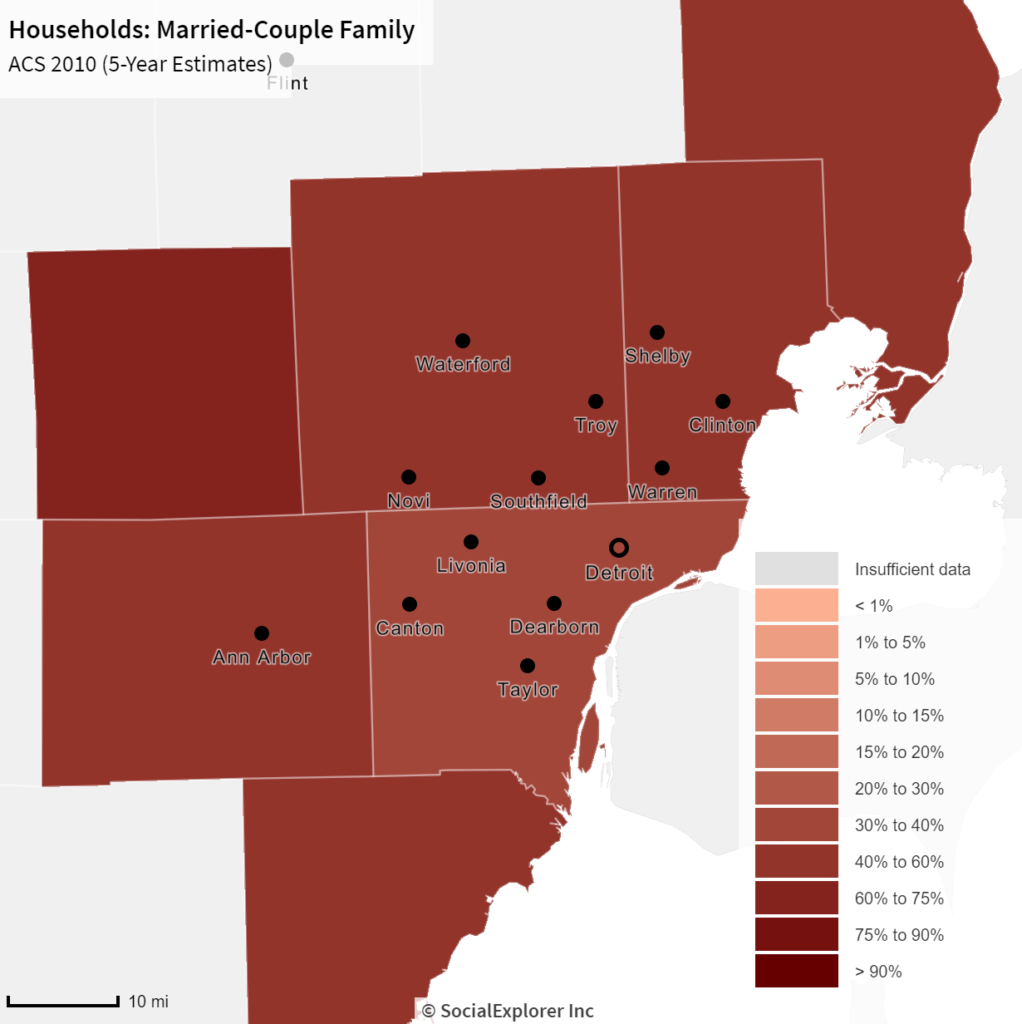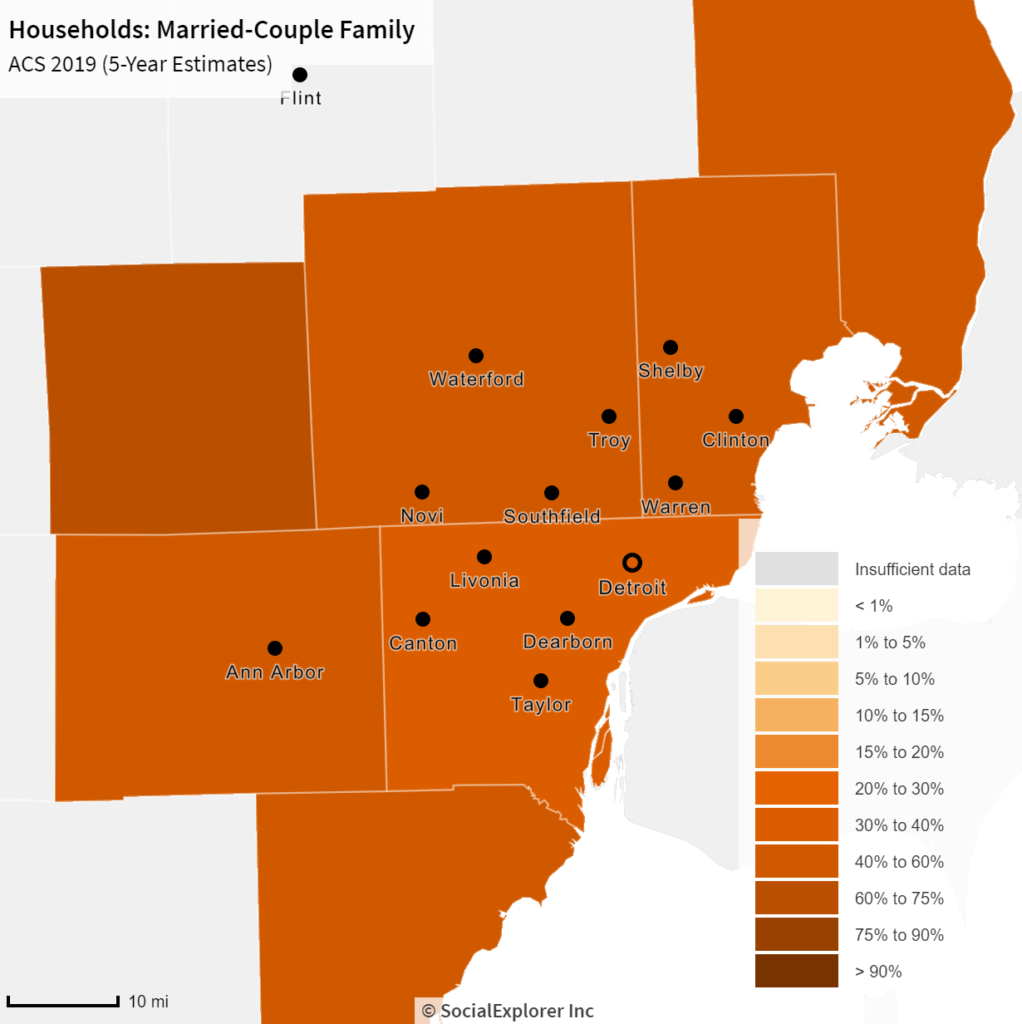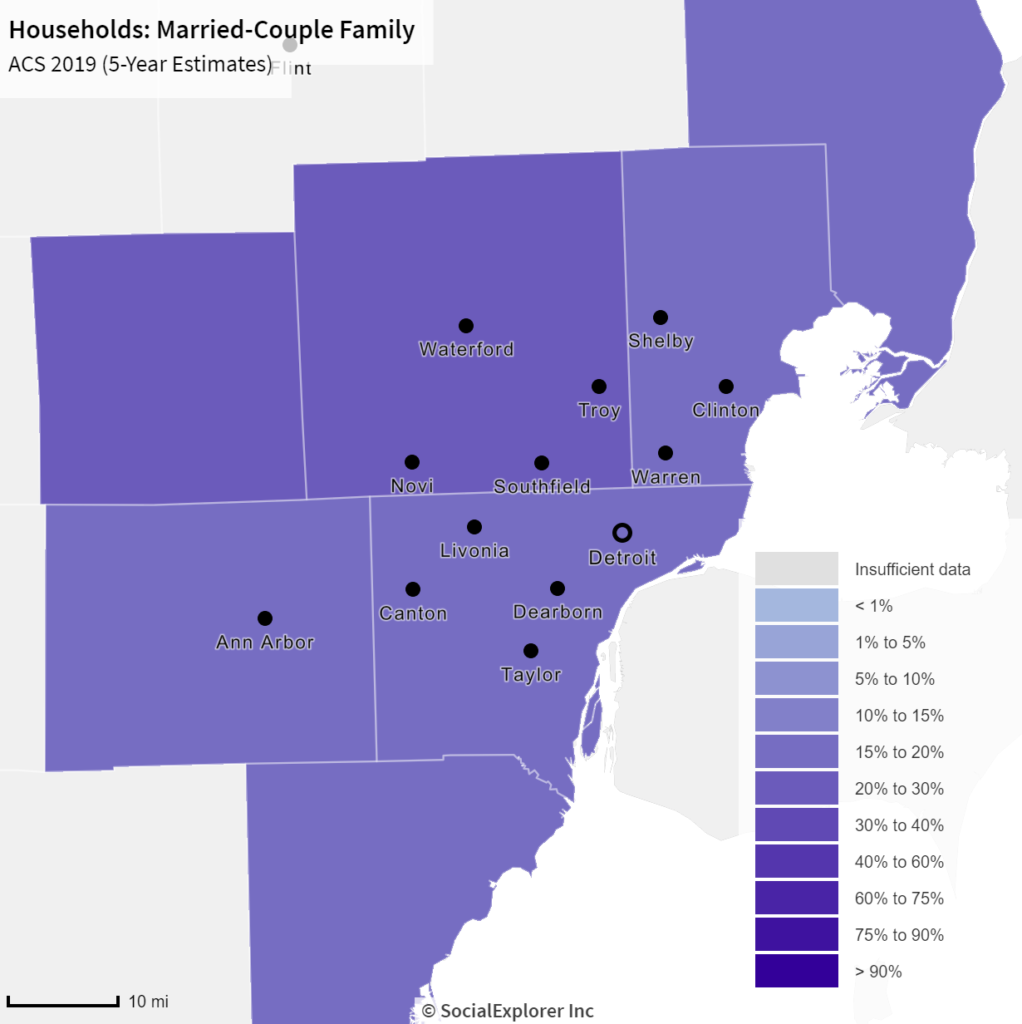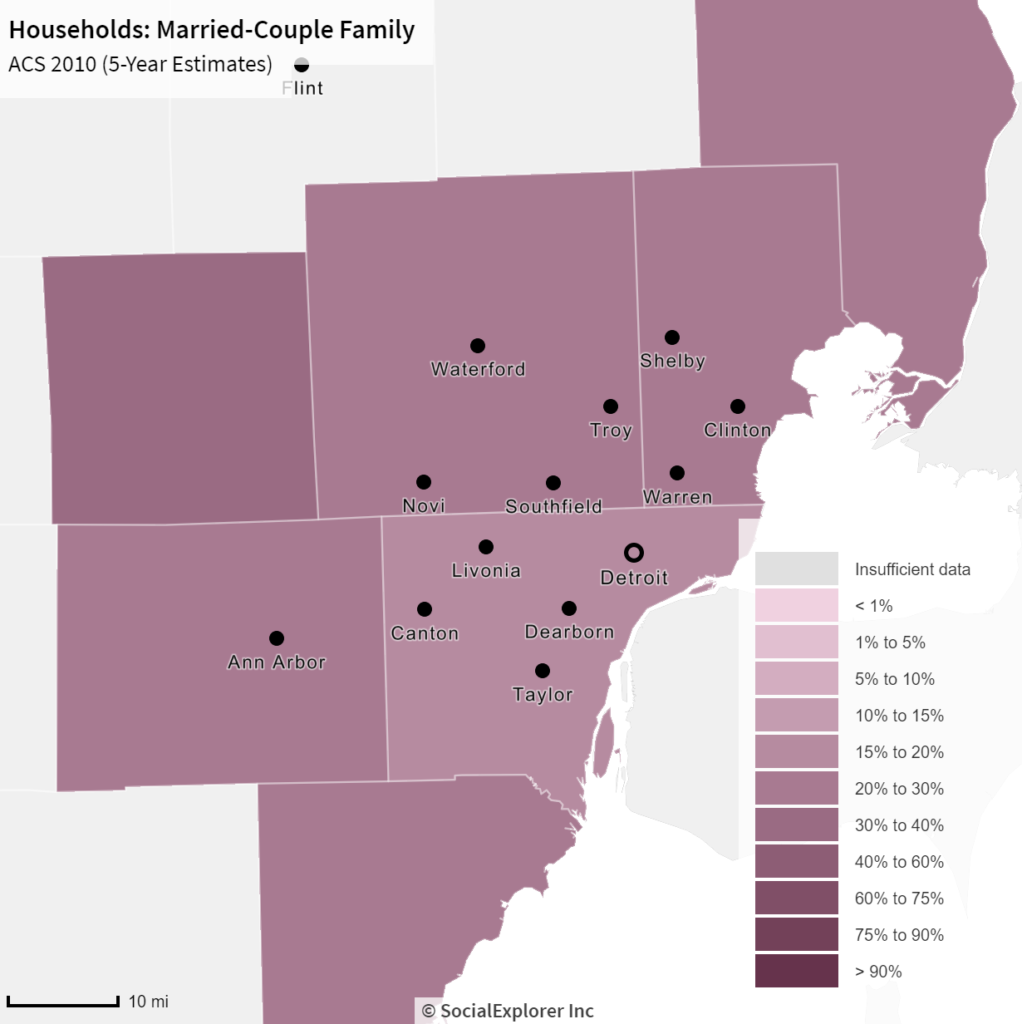Overall, there was a greater percentage of individuals in Southeastern Michigan who were never been married in 2019 compared to 2010, according to US Census data. In 2019, the county with the highest percentage of married individuals was Livingston County where 58 percent of those who were 15 years of age or older were married; comparatively 63 percent were married in 2010. Wayne County had the lowest percentage of those 15 years of age and older who were married in 2019 at 38 percent, compared to 40 percent who were married in 2010. Overall, each county in Southeastern Michigan experienced a decline between 1 and 4.5 percent of married individuals between 2010 and 2019.
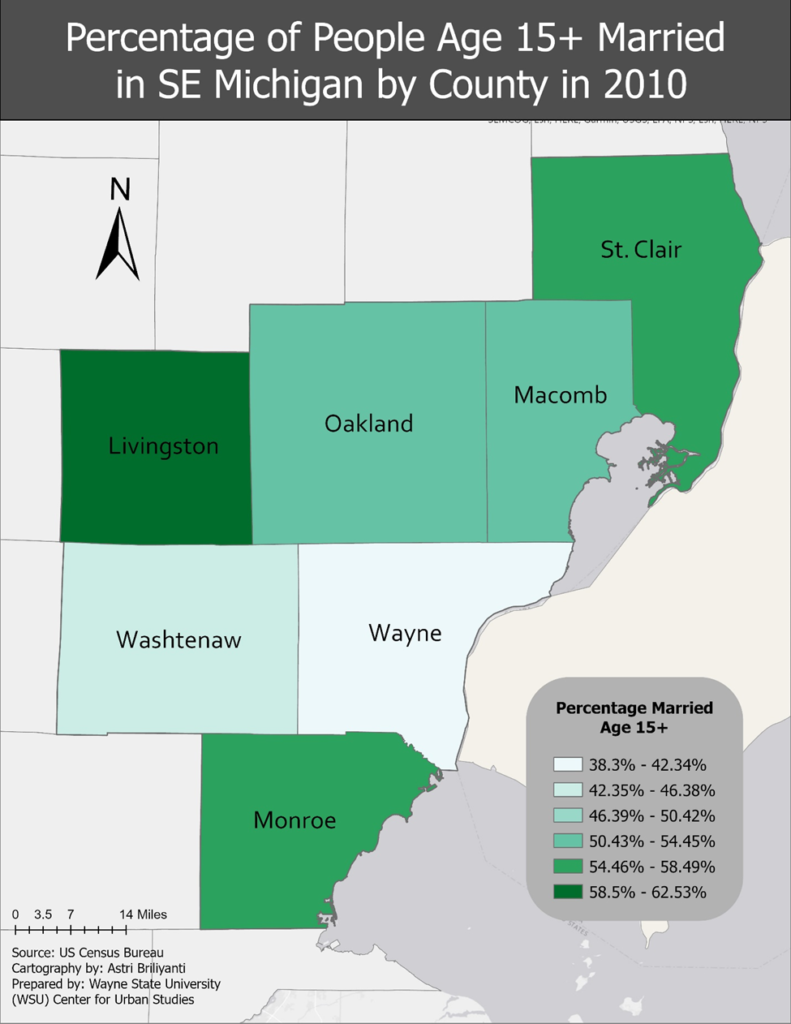
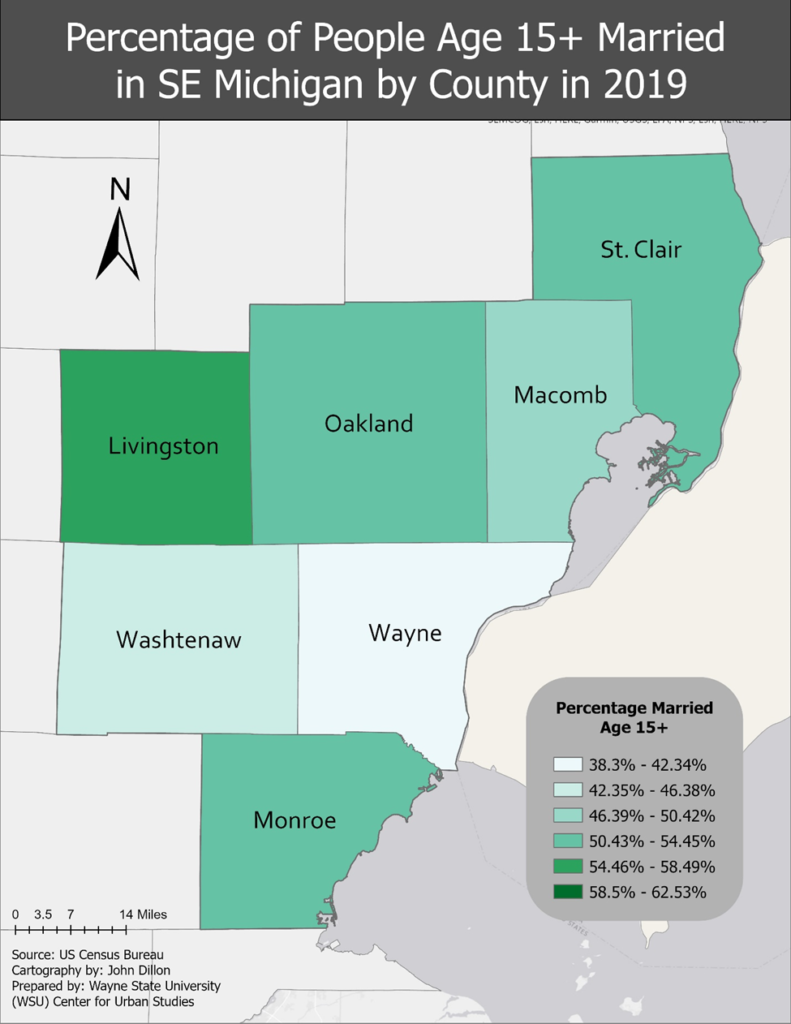
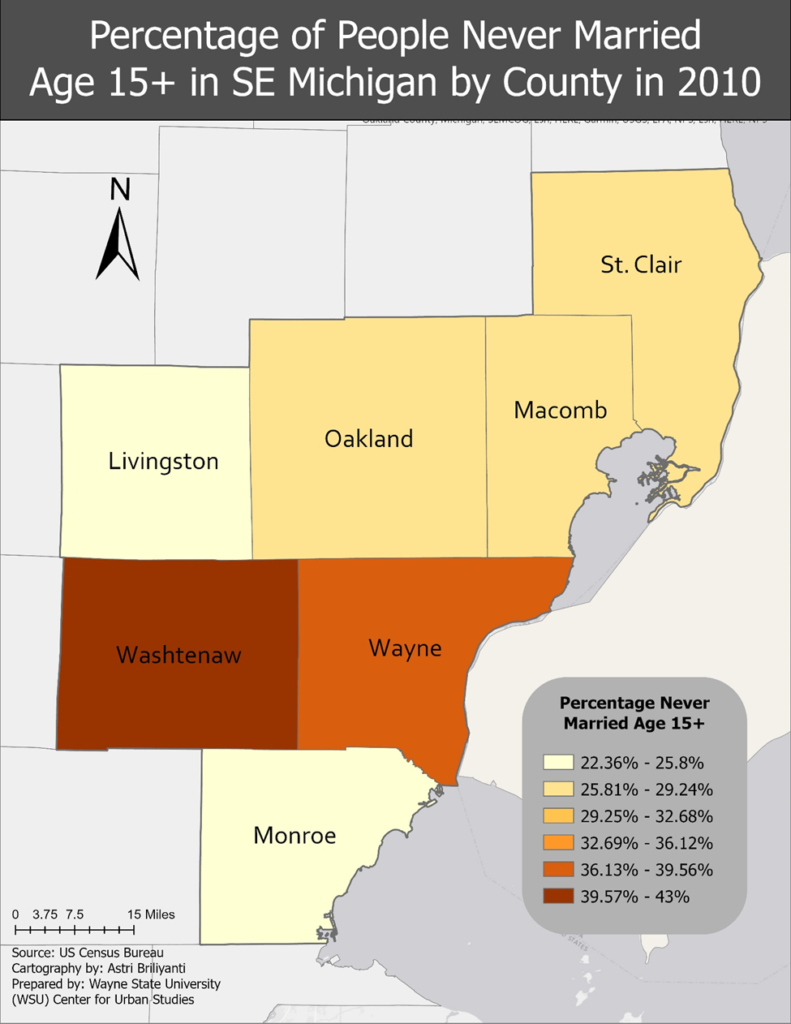
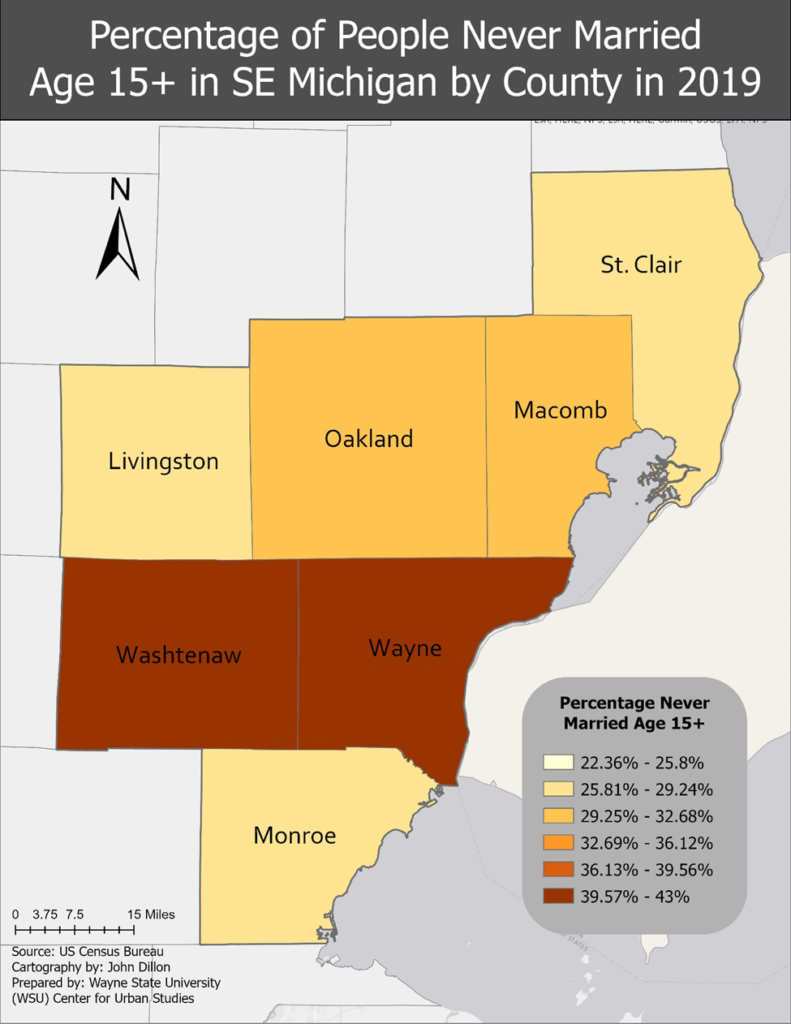
While the percentage of married individuals declined between 2010 and 2019, the percentage of those never married increased. Livingston County experienced a 3.5 percent increase between 2010 and 2019; 22.5 percent of individuals were never married in 2010 and 26 percent were never married in 2019. Overall in 2019 Washtenaw County had the highest percentage of individuals who were never married at 43 percent; Washtenaw County also had the highest percentage of individuals who were never married in 2010 at 40 percent.
As the general data shows, there is a growing trend of individuals not getting married, and a deeper dive into the data also shows that the age group further highlights that trend is the 20-34-year-old age group. According to the Census data, four of the seven counties in the region experienced a 3 to 7 percent increase in the percentage of 20-34-year-old individuals who have never been married between 2010 and 2019. Livingston County experienced the greatest increase at 7 percent; in 2010 56 percent of 20-34-year-olds in Livingston County were never married, and by 2019 that increased to 73 percent. Washtenaw County experienced a 5 percent increase while Macomb and Wayne counties each experienced 3 percent increases. Monroe County was the only one in the region to experience a percent decrease in 20-34-year-olds who were never married; that increase was only 0.3 percent.
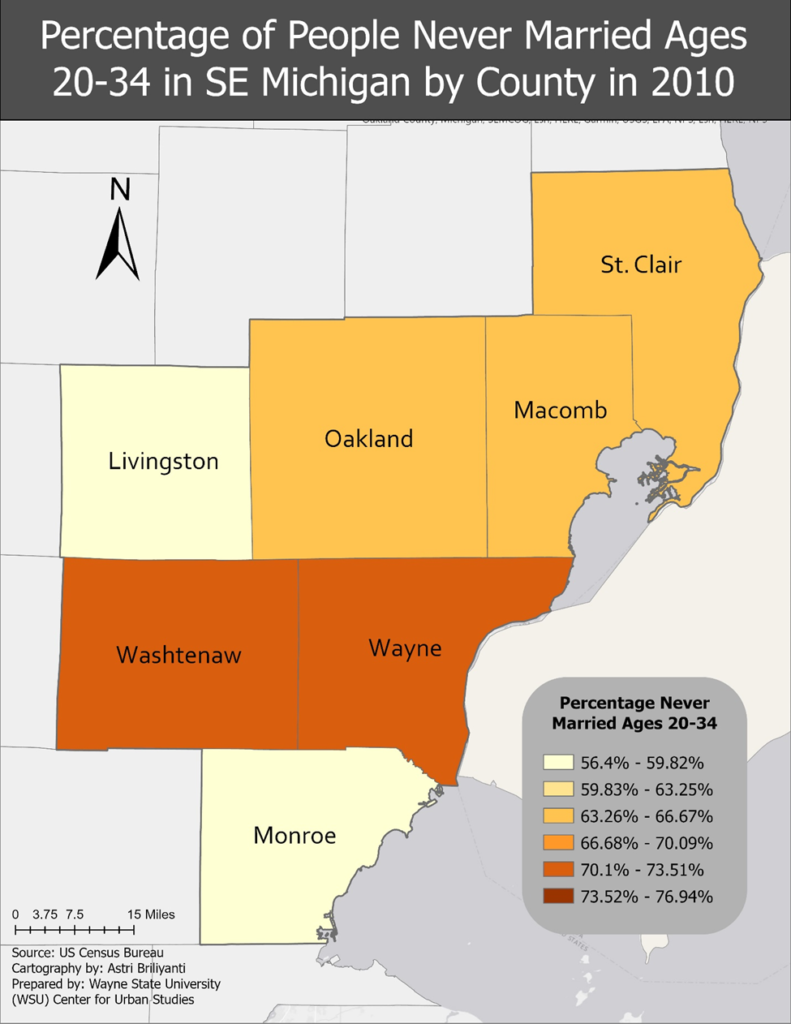
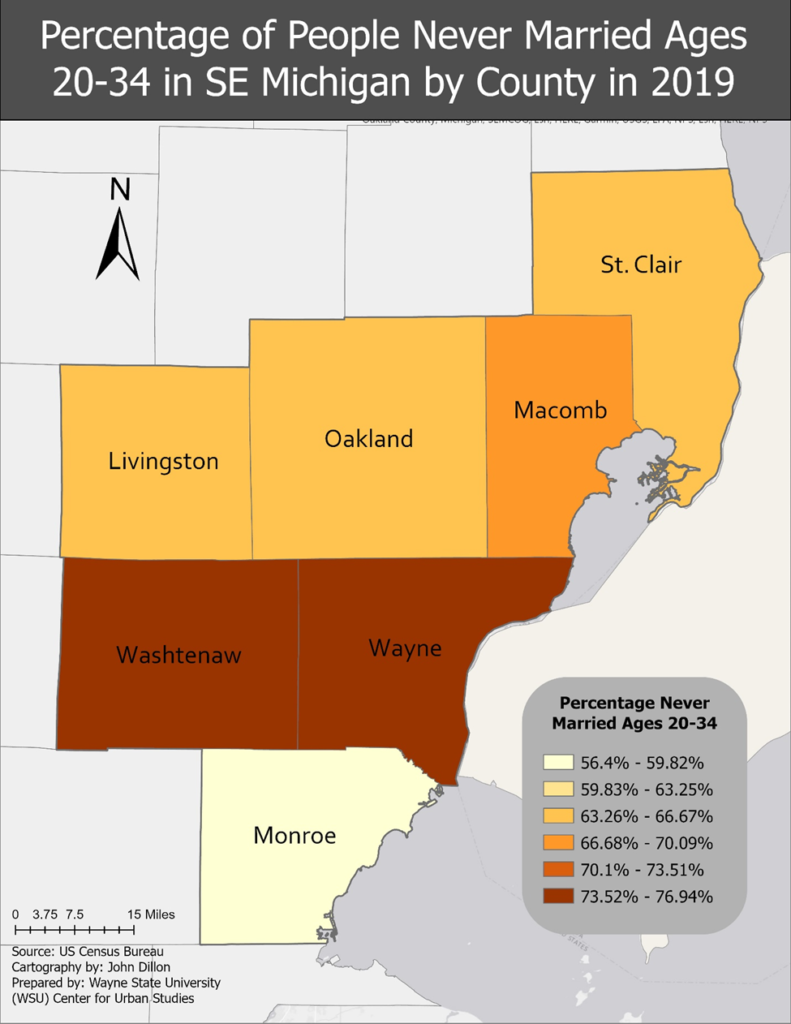
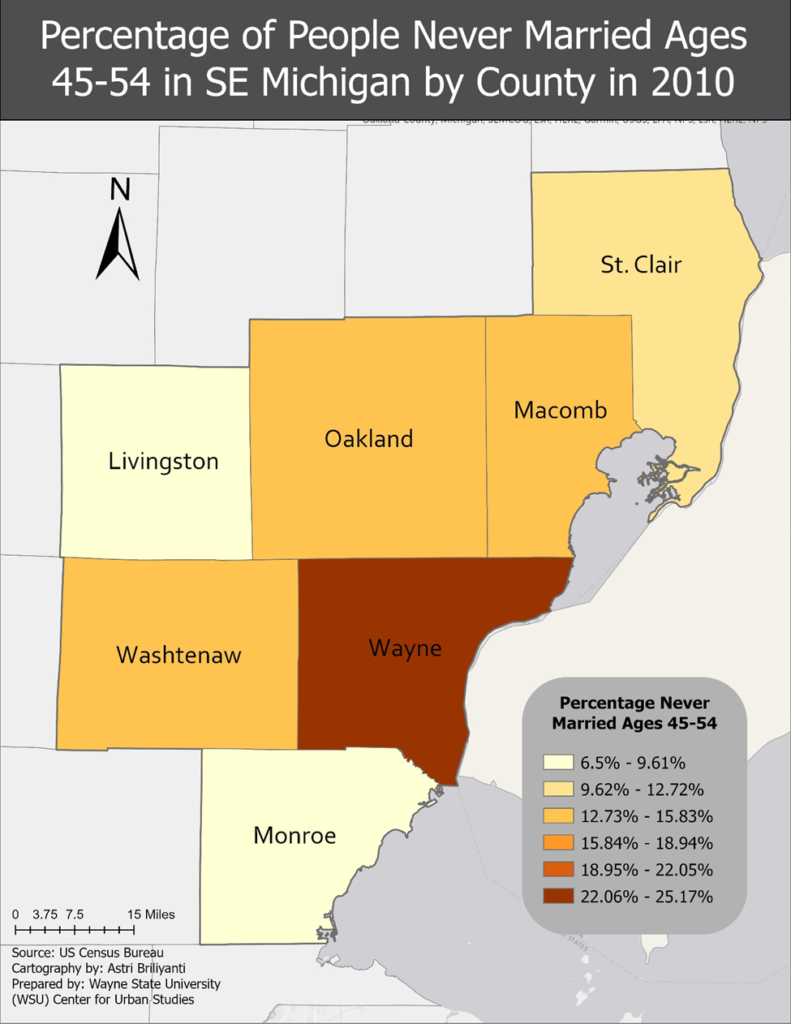
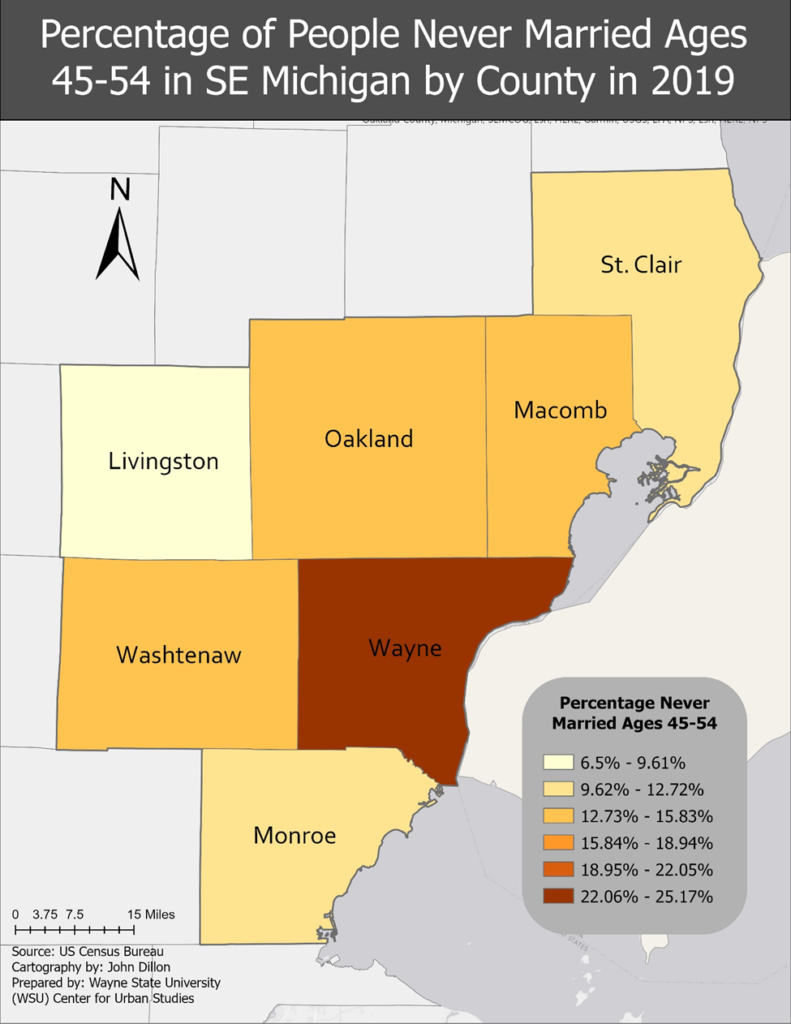
In addition to the percent increase of 20-34 year-olds who were never married between 2010 and 2019, there was also a small increase the percentage of 45-54-year-olds who were never married. In that time frame there was a 0.04 to 2.2 percent increase in that age group never married amongst six of the seven counties. Wayne County experienced the largest increase at 2.2 percent; 23 percent of the 45-54-year-olds in Wayne County were married in 2010 and by 2019 that increased to 25.2 percent. St. Clair County was the only one to experience a small decrease; about 1 percent less of the 45-54-year-olds in St. Clair were marred in 2019 compared to 2010.
Just as there were increases in the percentage of 20-34-year-olds and 45-54-year-olds never married amongst the seven counties in the region, there was also a decrease in those getting married amongst those two age groups.
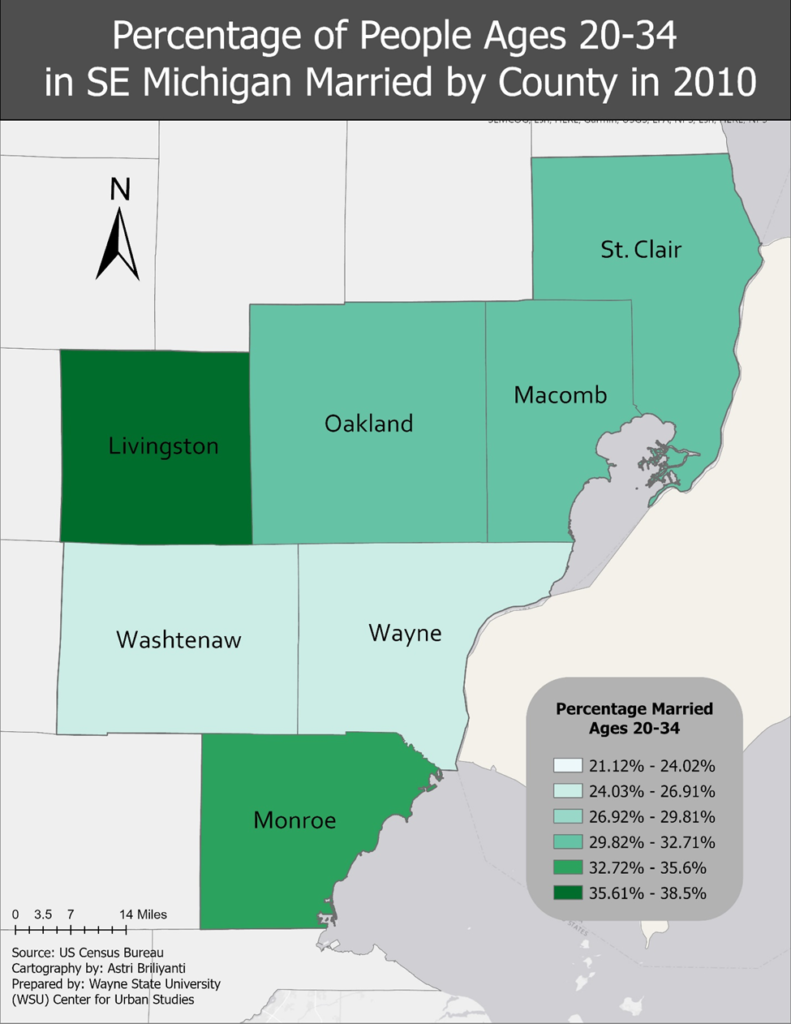
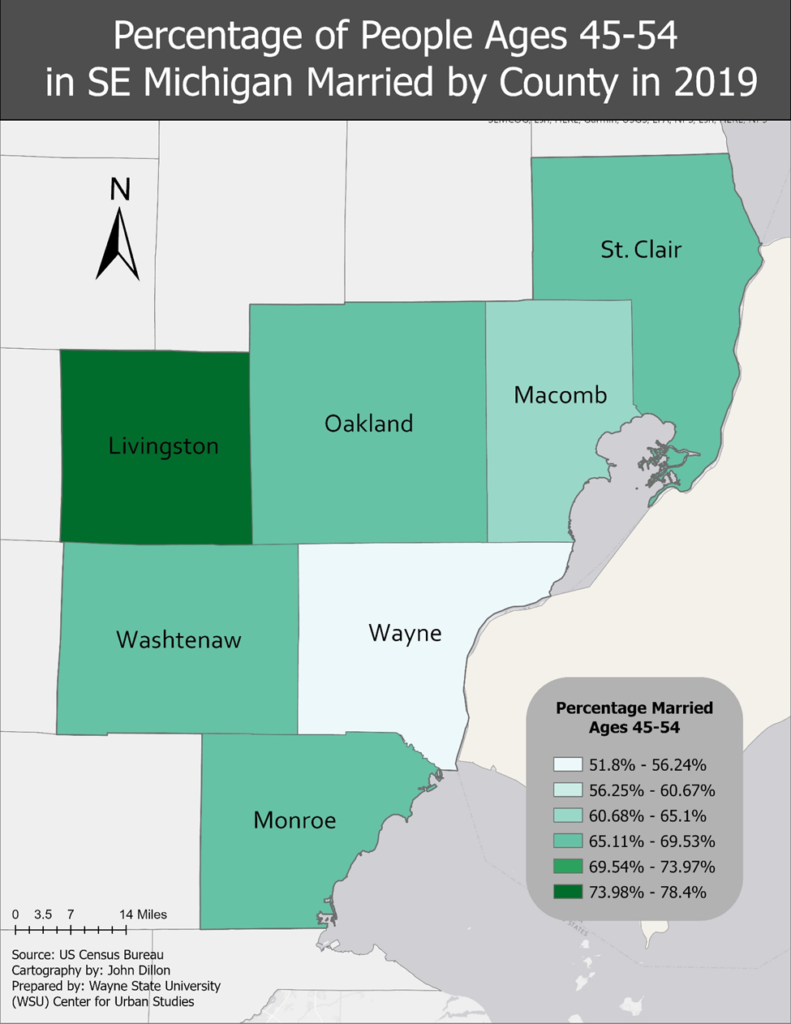
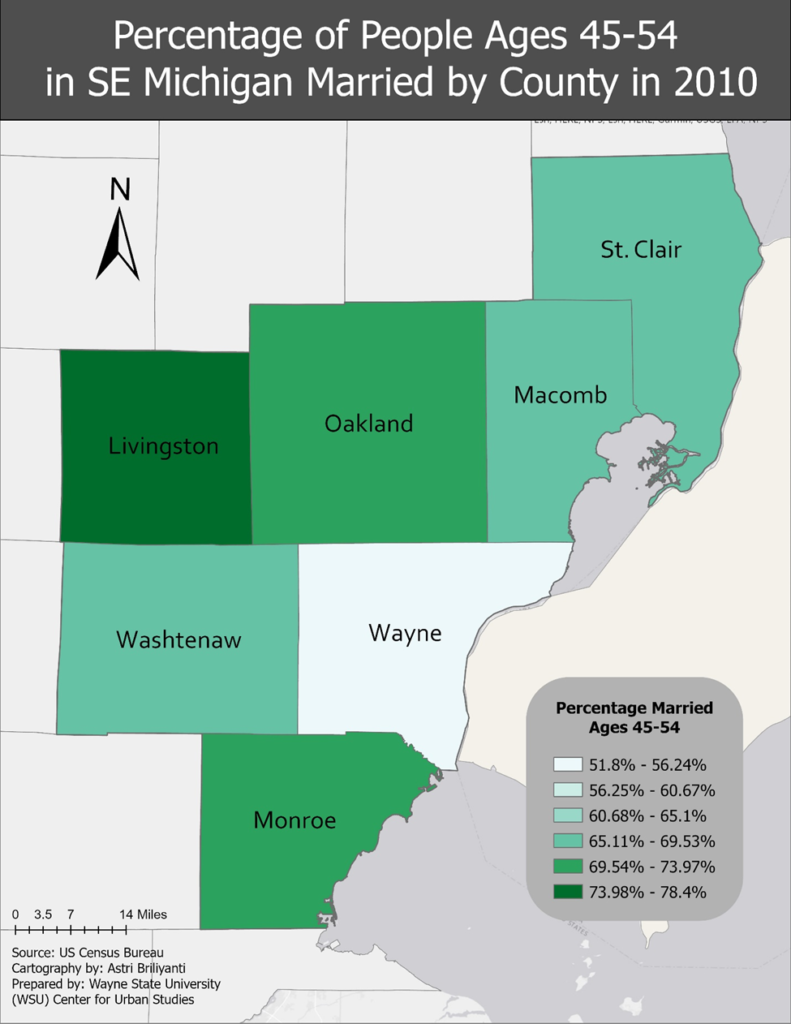
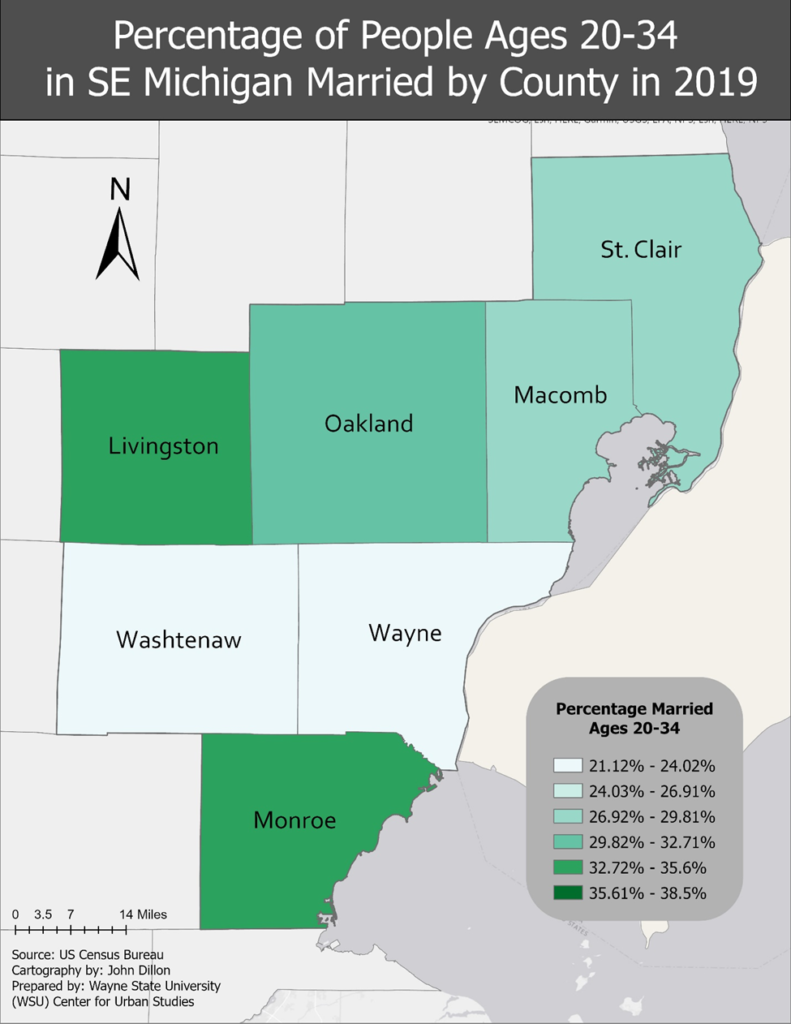
Nationally, the trend of non-married individuals has been increasing since 1990, according to the Pew Research Center. Factors such as different societal priorities, such as increased focus on the workforce, and higher costs of living are in part driving this trend. Furthermore, the Brookings Institute found that marriage rates are also declining amongst the middle class, possibly due to the cost of raising children.
